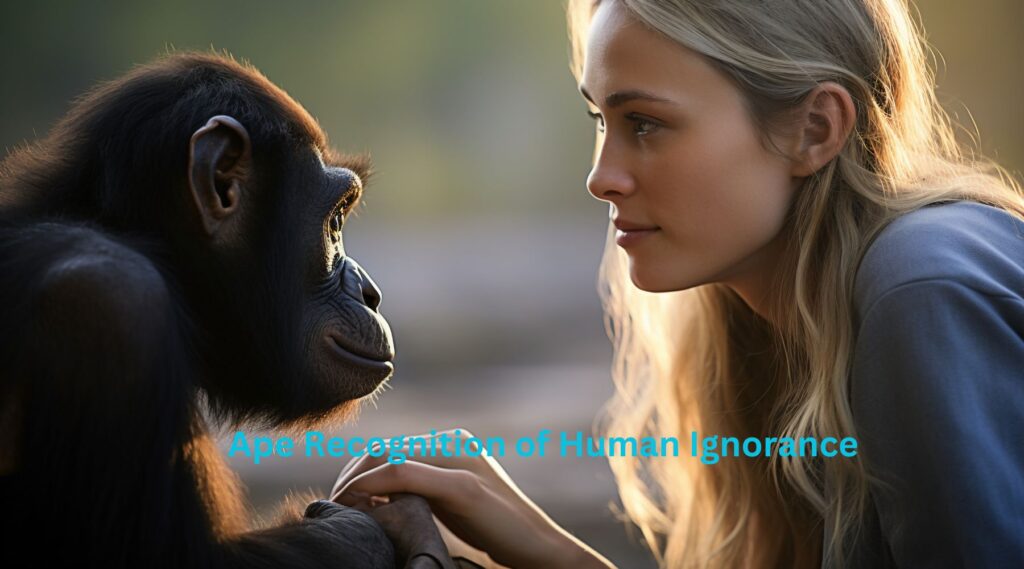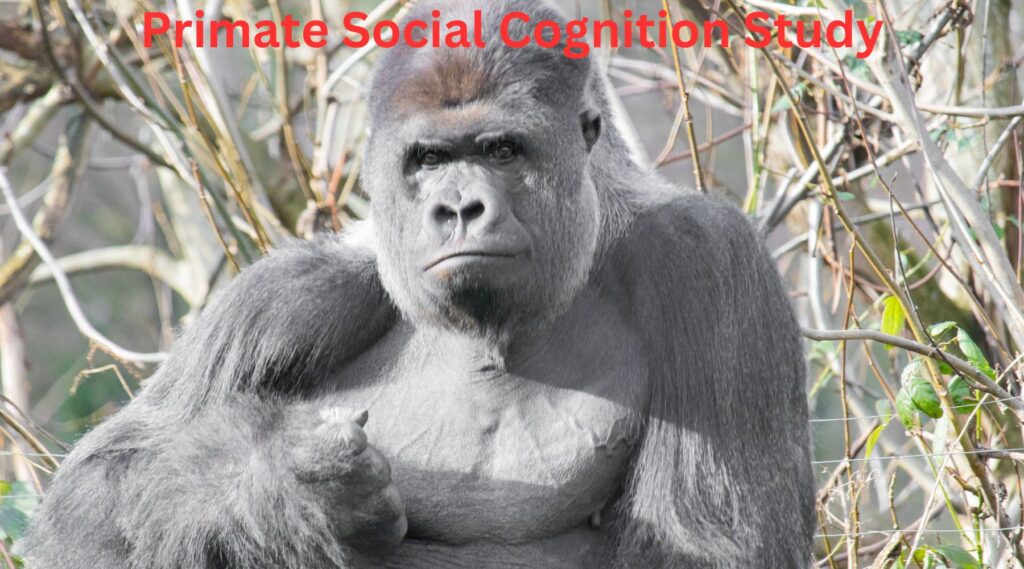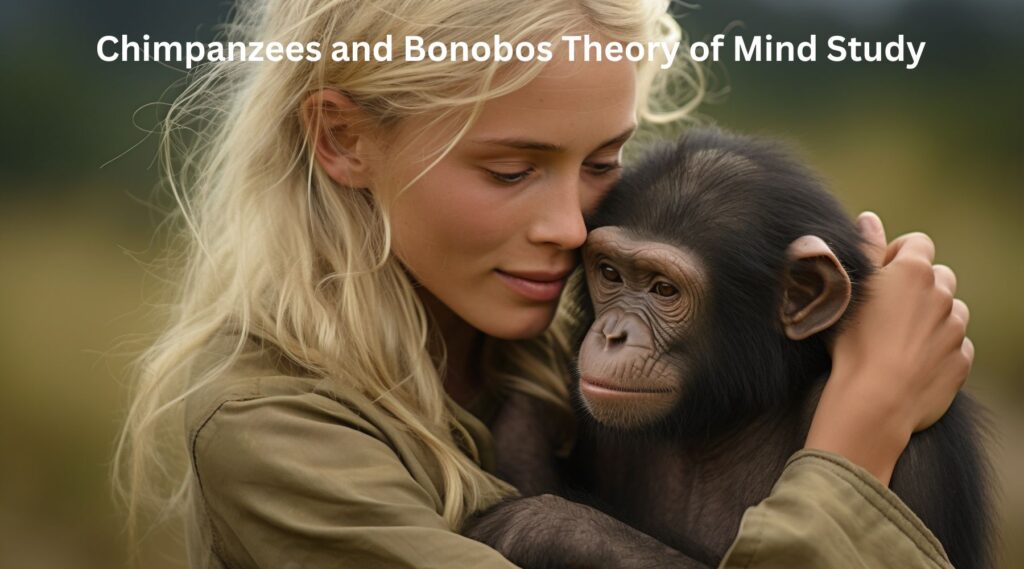Great! Here’s a brief summary of the study:


According to an intriguing study, certain apes—chimpanzees and bonobos in particular—are able to recognize when humans are ignorant of a subject. The monkeys watched people in a series of experiments while they looked for hidden objects. The findings demonstrated that when the human searchers were unsure or lacked all the information required to locate the object, the apes were able to recognize it.
Chimpanzees:
One important aspect of these primates’ sophisticated social cognition and theory of mind is their capacity to recognize when others lack knowledge.
The results imply that these apes have an awareness of other people’s mental states that was previously believed to be exclusive to humans. This capacity to identify others’ ignorance may be extremely important for their communication and social connections.
Of course! This is an organized Q&A format with study-based subheadings: Chimpanzees
What was the main finding of the study Chimpanzees?
According to the study, chimpanzees and bonobos are able to recognize whether humans are ignorant about a particular subject. When humans lacked the knowledge necessary to locate a hidden object or were unsure, the apes were able to tell.
Who conducted the study, and where were the chimpanzees?
Researchers from Johns Hopkins University conducted the study.
What experiments were performed?
In a series of trials, the apes watched as humans concealed treats—like grapes or Cheerios—under cups. The humans could occasionally see where the treat was buried, but not always. The human has to find the treat for the apes to get it.
How did the apes react when the humans didn’t know where the treat was?
The apes swiftly indicated the appropriate cup to assist the humans in finding the treat when they failed to notice where it was placed. The ability of the apes to identify when humans were lacking information was shown by this conduct.

What cognitive ability does this study suggest the apes possess?
According to the study, these monkeys have a “theory of mind,” or the capacity to recognize that other people have distinct backgrounds and viewpoints. This is a noteworthy marker of highly developed social cognition.
Why is this finding important, chimpanzees?
This study is significant because it suggests that people are not the only ones who can identify ignorance in others. It implies that this cognitive ability, which is essential for social interactions and communication, may have developed in our common ancestors millions of years ago.
How did the researchers ensure the apes’ responses were deliberate?
The researchers saw that the apes pointed in a clear and intentional manner; some bonobos even pointed more than once to make sure their message was understood. The fact that the apes were consciously attempting to impart their knowledge to the humans was supported by this uniformity.
How were the experiments planned by the researchers?
The purpose of the meticulously planned studies was to assess the apes’ comprehension of human knowledge. Researchers created circumstances in which people were either aware of the location of a hidden treat or were not. The behavior of the bonobos under both circumstances was examined to determine how they reacted to the degree of human knowledge.
What were the main actions of the bonobos that were noticed?
The bonobos guided the humans to the appropriate cup when they were unsure about where the treat was buried. This conduct suggests that the bonobos were able to deduce the humans’ ignorance and intervened to assist them.
What conclusions did the scientists draw on the social cognition of the bonobos?


The scientists came to the conclusion that bonobos are capable of understanding other people’s mental states because they have a certain amount of social cognition. A complex cognitive ability that was previously believed to be exclusive to humans is the capacity to identify when others lack knowledge. Chimpanzees.
What connection does this study have to the idea of “theory of mind?
Chimpanzees: The capacity to assign mental states to oneself and others, including beliefs, intents, wants, and knowledge, is known as theory of mind. According to the study’s findings, bonobos may possess a theory of mind as they are able to identify information gaps in people and act to fill them.
How do these results affect our knowledge of animal cognition?
Chimpanzees: Our knowledge of animal cognition will be significantly impacted by these results. They contend that apes possess more sophisticated cognitive capacities than previously believed and that the origins of human social cognition may lie in our shared ape ancestors millions of years ago.
Were ape species other than bonobos used in the study?
Chimpanzees: Although the focus of this particular study was bonobos, other studies have been carried out with chimpanzees, yielding findings that are similar. Both species exhibit a sophisticated comprehension of human knowledge and are able to identify when humans are ignorant.
What avenues for further investigation might this work lead to?
Other primate species‘ cognitive capacities and the ways in which these abilities evolve throughout time may be the subject of future studies. The brain processes that underlie theory of mind in apes may also be studied and contrasted with those in humans.
What impact do these results have on our understanding of the evolutionary connection?
between apes and humans?
These results demonstrate the close evolutionary ties between apes and humans. Our shared cognitive capacities provide insight into the evolutionary history of social cognition and theory of mind by implying that these features’ roots were present in our common ancestors.

What real-world uses might this research lead to for chimpanzees?
Enhancing human-animal relationships, conservation initiatives, and animal welfare can all benefit from an understanding of apes’ cognitive capacities. Better methods for managing and caring for apes can result from an understanding of their complex social cognition.


In conclusion:
According to a study from Johns Hopkins University, chimpanzees and bonobos are able to identify human ignorance. By seeing people looking for hidden incentives, these apes demonstrated theory of mind, which is the ability to comprehend the mental states of others, including ignorance. This shows that our primate ancestors’ sophisticated social behaviors and cognitive capacities developed millions of years ago, laying the groundwork for human social cognition. And more….


